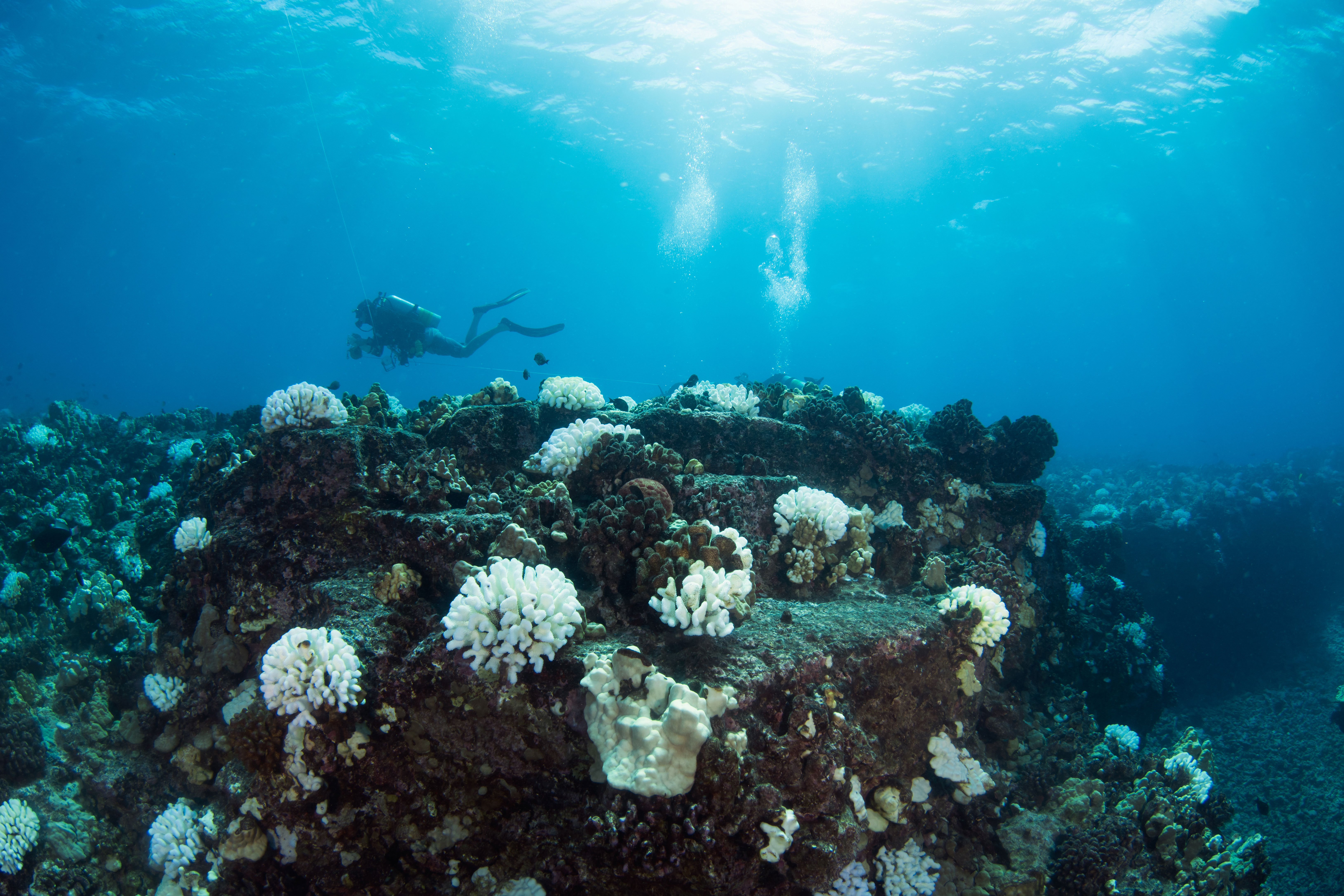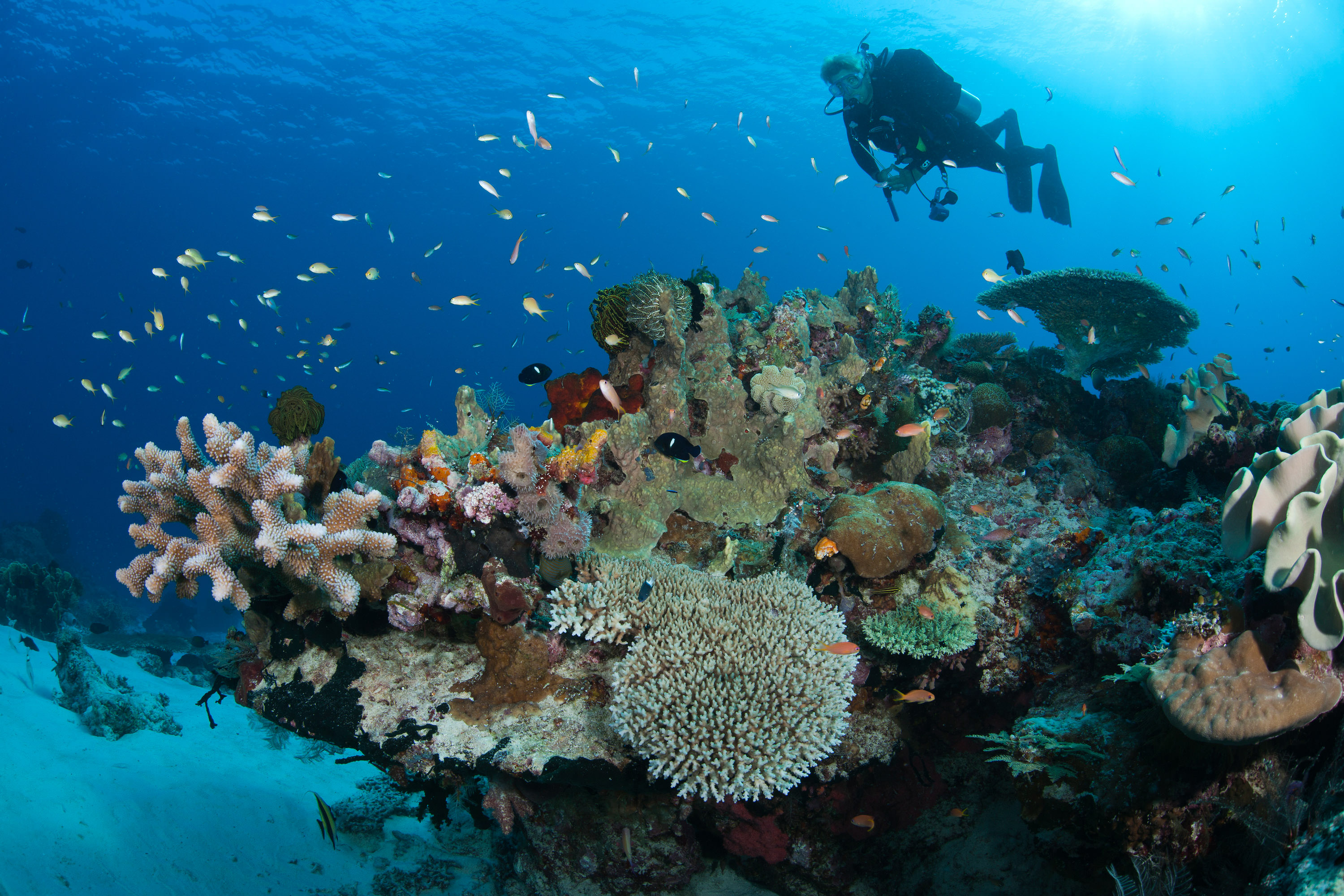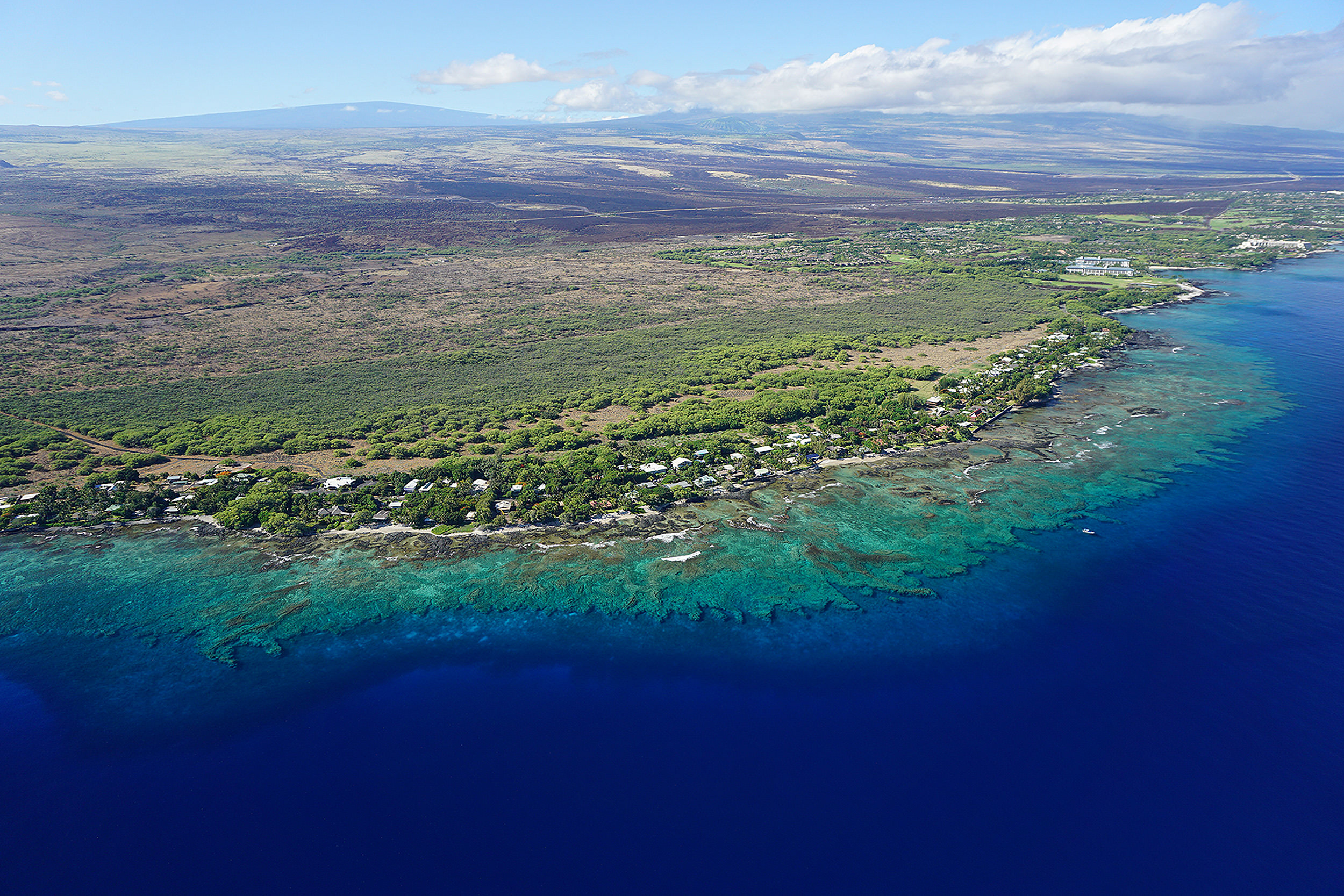Mural Depicts the Impacts of Coral Bleaching
Artist Jana Ireijo has created a "vanishing" mural that illustrates how climate change and the coral bleaching it contributes to are making reefs disappear.

Let the Mural Vanish So the Coral Does Not
Inspired by the beauty and fragility of our environment, Hawai‘i-born artist Jana Ireijo creates ephemeral “vanishing” murals that illustrate the impacts of climate change on vulnerable species and habitats. She created this mural, comprised of iconic Hawaiian marine life, to show how bleaching is impacting coral reefs along our coasts. “My mission with these murals is to raise awareness and inspire a sense of urgency to take action—to let the murals vanish so our natural environment does not,” said Ireijo. “I was raised in Hawai'i, so drawing attention to the issue of coral bleaching is especially meaningful to me. My hope is that this mural will help generate the support and action needed to protect coral reefs.” You can see more of Jana’s work at janaireijoart.com.
Commissioned by TNC and presented in partnership with the Maui Ocean Center Marine Institute, the mural is on display at the Maui Ocean Center.
We Need Reefs
Rising up from the ocean floor, healthy coral reefs brim with life and color. Each generation of coral builds upon the last, creating vast underwater structures that are integral to to over a quarter of all marine species and to our well-being.
Benefits of Coral Reefs
The reefs that line Hawai‘i’s coasts are environmental, economic, recreational and cultural treasures.
Feeling the Heat
Despite their immensity and power to protect us, the living reefs along our shores are also at risk. Local pressures from overuse, invasive species, and land-based pollutants have degraded the health of reefs, contributing to a 60 percent decline in living coral reefs in some areas of the State over the past 40 years. This, in turn, has contributed to a 75 to 90 percent decline in reef fish populations statewide. With reef health already compromised, coral reefs are more vulnerable to the impacts of Earth’s warming climate, including heat-induced coral bleaching.
What Is Coral Bleaching?
Coral bleaching is an increasingly common threat associated with climate change. Corals are animals that have a symbiotic relationship with microscopic algae called zooxanthellae that live in their tissues. These algae are the coral’s primary food source, and the source of its color. But when ocean waters get too warm, the algae abandon the coral revealing the coral’s white skeleton, hence the term bleaching.
Marine heatwaves, which are higher than normal ocean temperatures caused by climate change, are the primary cause of coral bleaching. When corals bleach, they are vulnerable to disease and death. In a 2015 marine heatwave, Hawai‘i lost 30 percent of its living coral reefs statewide. Marine heatwaves are expected to occur with increasing frequency and intensity in the coming decades.

What Can We Do to Help Hawaiʻi’s Reefs?
Though it will take a concerted global effort to address the causes of global climate change, there are certainly things we can do to lessen its impacts. Science has shown that healthy coral reefs are more resilient, meaning they are better able to resist or recover from bleaching, whereas more degraded coral reefs often cannot.
The most important thing we can do to increase reef resilience is to protect and restore reef health by minimizing the local pressures. Here in Hawai‘i, we work with government, academic, business, and community partners to foster pono (responsible) fishing and reduce land-based impacts from sediments and nutrients. Together, we blend the latest science and traditional knowledge to restore coastal habitat through community-based co-management and expand local capacity to manage coral reefs by sharing knowledge and lessons learned through peer learning networks that foster collaboration and collective action.
TNC also leads coral reef conservation and restoration projects in more than 30 countries, working closely with local, regional, and global partners and through our Reef Resilience Network to strengthen coral reef conservation around the world.
Working together, we can help ensure healthy reefs and thriving fisheries for generations to come.




